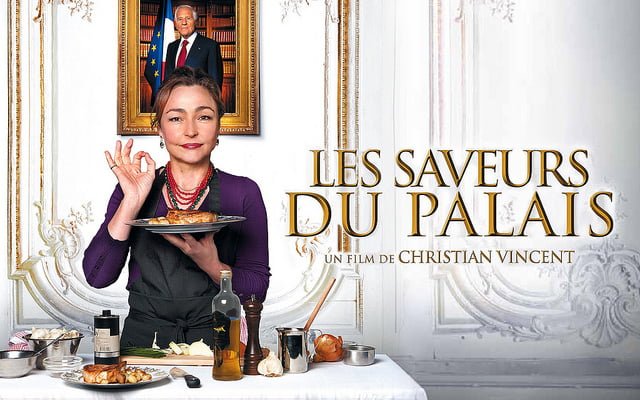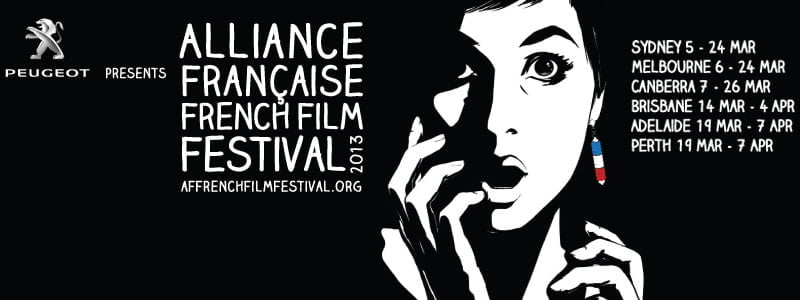Captioning with plaisir: the art of French subtitles
How often have you gone to see a French film at the cinema, only to be extremely distracted by the French subtitles? Halfway through the film, you realise that you have spent your time disagreeing with the translation, or just wishing your eye would stop wandering to the bottom of the screen.
In light of the recent Alliance Française French Film Festival, I thought that I would share with you some interesting notes on subtitling. Once you are educated on how much work goes into creating subtitles, you will never be annoyed by them again! Now when I see a French film, I thoroughly enjoy it and try to analyse the translator’s every decision.
The five golden rules
So here are a few rules with which a translator must work:
- Every line must contain about six words (depending on complexity and length).
- Every subtitle must contain no more than two lines.
- Leave no more than two seconds to read one subtitle, or no longer than the time it takes for the actor to say the line.
- A word in italics is a title.
- Translated on-screen words are in capital letters.
Translating the French culture
Language is closely related to culture. This poses a difficult challenge for translators whose job it is to correctly translate cultural phrases into another language. There are also slang words and jokes to translate in such a way that they can be quickly comprehended by somebody who speaks a different language, or who is from a different cultural background. The language must be adapted to suit a certain tone, and to represent a type of social class or way of speech. Even the translation of a film title gives a great indication of audience.
An example of French translation

Watch the trailer with the English subtitles to see for yourself:
Even in this small excerpt, you can identify how a translator has thought out some of the phrases.
Firstly, it is common for the French to use the full title ‘le président de la République’ to refer the the President. This is always omitted in the English subtitle.
How about when she says “Cuisine privée de la présidence de la République, j’écoute”, when it is sufficient to write “President’s private kitchen” in English?
Or when Francois Mitterand states, “j’ai besoin de retrouver le goût des choses”, where “le goût” is translated as “tastes and flavours“?
And “C’est moi, le dessert!” – shouted by the head chef – which is not a grammatically possible phrase structure in English.
Also tastefully, “il l’a mangé avec plaisir” becomes “devoured it”, where ‘devouring’ is used in a positive sense to express the désir et plaisir of eating.
Appreciating French subtitles
As I’m sure you can identify even in this short bande-annonce, there are so many elements that make French translation an extremely interesting subject. It is much like reading a translated book, but with the beauty of the original text printed on the opposite page for real-time comparison.
Hopefully the next time you watch a French film, you will watch it with as much plaisir as François Mitterand enjoyed his cabbage.
Do you enjoy subtitled films? What are some of your experiences with translations?
Image credits:1. Alliance Française
2. FAB – Subtitler Professional Addition
3. Haute Cuisine Wallpaper








Thank you for this informative post! I didn’t know that there were particular rules for subtitles.
One subtitle I remember was in a Danish film called ‘Blinkende Lygter’ (Flickering Lights) A character in the subtitle references Six Flags amusement park, and Canadians, but it’s very clear that he’s spoken about the Swedes. But it was apparent that the subtitling was done for the American market. 🙂
This was really interesting – I’ve always been fascinated by subtitles, especially how jokes and jeux de mots translate not only linguistically, but across cultures, too. What a challenging job! Merci, Katerina 🙂
Bonjour, Katerina,
Malheureusement, j’arrive pas à faire passer le clip publicitaire en entier. (Je ne peux l’écouter que par ‘bouffées’ [?in ‘snatches’]). Tant pis mais, en tout cas, c’est quelque chose qui me fascine, l’art de distiller l’essentiel d’une réplique prononcée par un acteur/une actrice mais d’en sauvegarder à la fois le caractère du propos, soit soutenu, soit très argotique. En tant qu’Aussie moi-même, je me demande comment on ferait pour bien traduire ‘Fair suck of the sauce bottle’, cette fameuse expression de K. Rudd d’il ya plusieurs ans. On serait tenté de dire quelque chose comme: “Faut pas charrier, hein?!” mais cela n’évoque pas la même chose. “He’s got a kangaroo loose in the top paddock”? = “il lui manque une case” ne fait pas le même effet.
Gerard